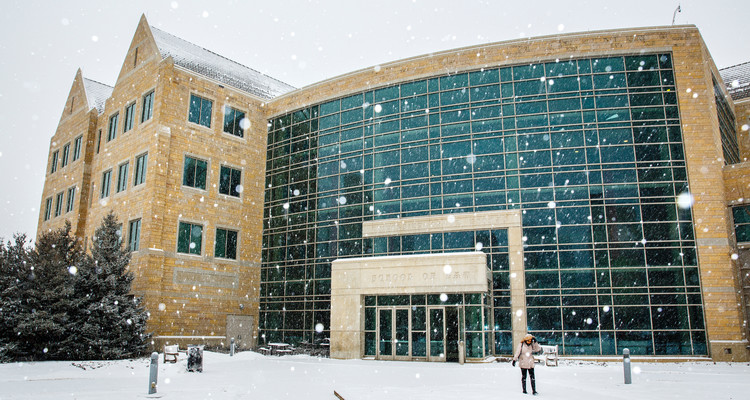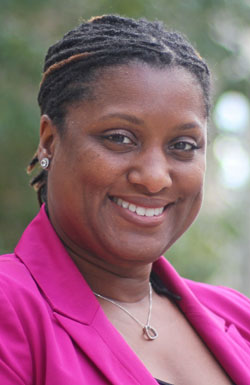Compared to white professionals, professionals of color are more willing to move to the Minneapolis-St. Paul region but also are more likely to leave. A broad coalition of organizations across the metro is working to explain what’s behind this complex story and what can be done to increase retention.
“Across ages, backgrounds and ethnicities, professionals of color cited the region’s lack of diversity and cultural awareness as the top reason to leave,” according to Dr. Janine Sanders Jones, who acted as the project's statistician. “This offers a key insight into the biggest challenges we must confront in order to improve retention.”
More than 200 regional leaders from business, government, universities and foundations gathered at an event hosted by the University of St. Thomas’ downtown Minneapolis campus today to hear an overview of the Make It. MSP. findings and to discuss actions employers can take to be even more effective at recruiting a diverse workforce and supporting inclusion within their organizations as the region faces a workforce shortage.
“We hope that it can help everyone think about what they can do through their organizations and collectively as a region to make the greater Minneapolis-St. Paul region a better place for people of all backgrounds to live, work and thrive,” said Peter Frosch, GREATER MSP’s vice president of strategic partnerships and a leader of the Make It. MSP. effort. “Given that the greater Minneapolis-St. Paul region is facing a projected workforce shortage of roughly 100,000 people by 2020, improving our performance is not only a social imperative but an economic necessity.”
The research was conducted as part of Make It. MSP., an effort led by GREATER MSP in partnership with a network of more than 150 companies, nonprofits, local governments, higher education and other organizations that include the Bush Foundation, St. Paul Area Chamber of Commerce and St. Thomas.
Research for the project included a series of six focus groups and a survey. The focus groups, with 65 professionals of color balanced across race, age and other demographic characteristics, were conducted by Tamika Curry Smith, former director of diversity and inclusion at Target and then-consultant and head of TCS Group. The survey of 1,228 professionals of color was conducted by Sanders Jones, a member of the operations and supply-chain management faculty at St. Thomas’ Opus College of Business.
In its overview, Make It. MSP. said the project is intended to be a resource for leaders to learn more about what professionals of color are experiencing in the greater Minneapolis-St. Paul region.
“Family ties” is listed as the top reason for professionals of color to stay in the region, according to the research. In addition, Make It. MSP. identified six key themes that emerged from the focus groups and survey. The themes, including some comments listed in the Make It. MSP. summary, are:
- Culturally Specific Amenities and Disparities: Only 11 percent of respondents said weather is a concern. However, 43 percent indicated they are dissatisfied with the quality and quantity of culturally relevant events and amenities.
- Connection: Fifty percent of the respondents said they find it difficult to connect with new people outside of work. Black respondents, those who are single and those between the ages of 25 and 35 were even more likely to say it is difficult to connect.
- Representation: Only 35 percent of respondents feel that diversity is reflected in their organization’s leadership team.
- Bias and Discrimination: Sixty percent of respondents say they occasionally or frequently experience bias or discrimination based on race.
- Professional Advancement: Only 50 percent of respondents see a path for diverse people to advance in their organization.
- Diversity and Inclusion Efforts in the Workplace: Forty-three percent of respondents say there is a lack of cultural competence in the workplace.
Previous research noted in the study underscores why studying professionals of color is so important. A third of the Minneapolis-St Paul area will be people of color by 2030. Companies in the top quartile of racial and ethnic diversity were 35 percent more likely to have financial returns above their national industry median. While the greater Minneapolis-St. Paul region leads the nation’s top-25 metro areas in retaining professionals, it ranks 14th of 25 for retaining professionals of color. The region also lags top competitors on many significant indicators of shared prosperity among white people and people of color, the overview said.
A copy of the Make It. MSP report can be found here. More information about GREATER MSP can be found here.








